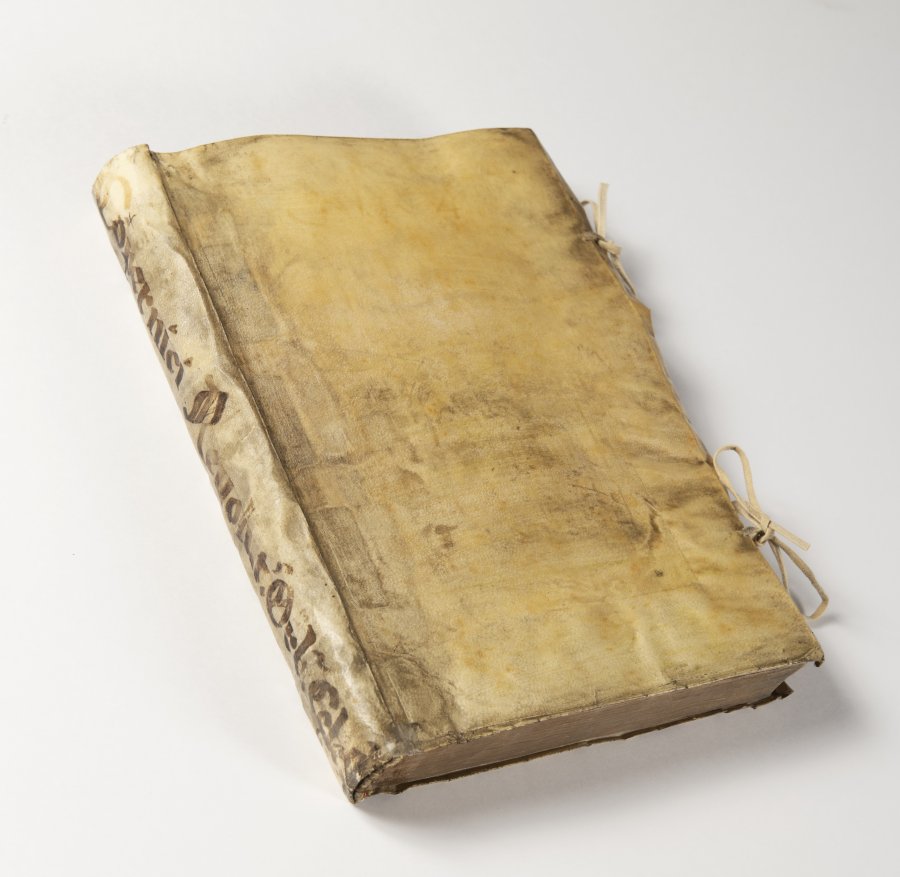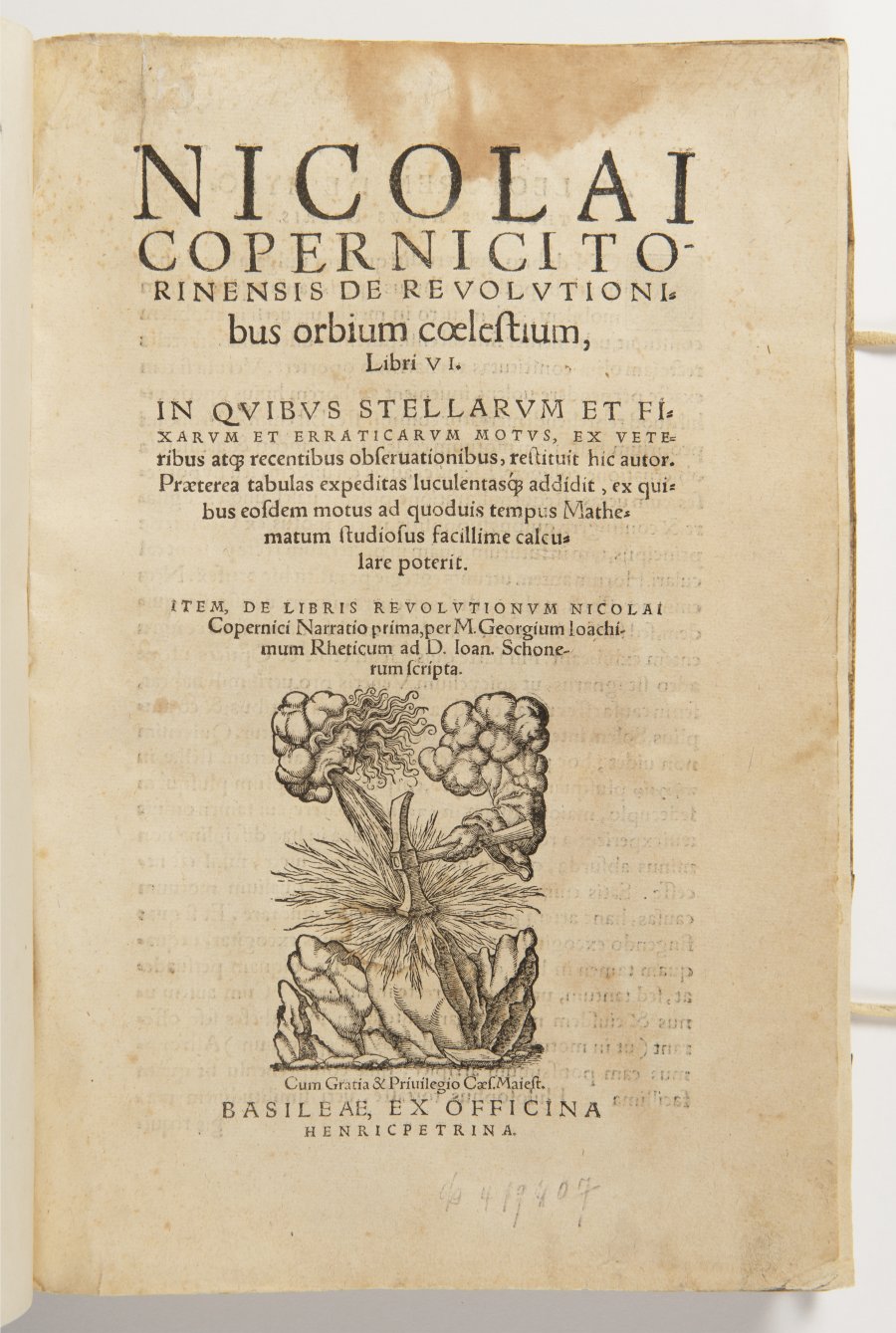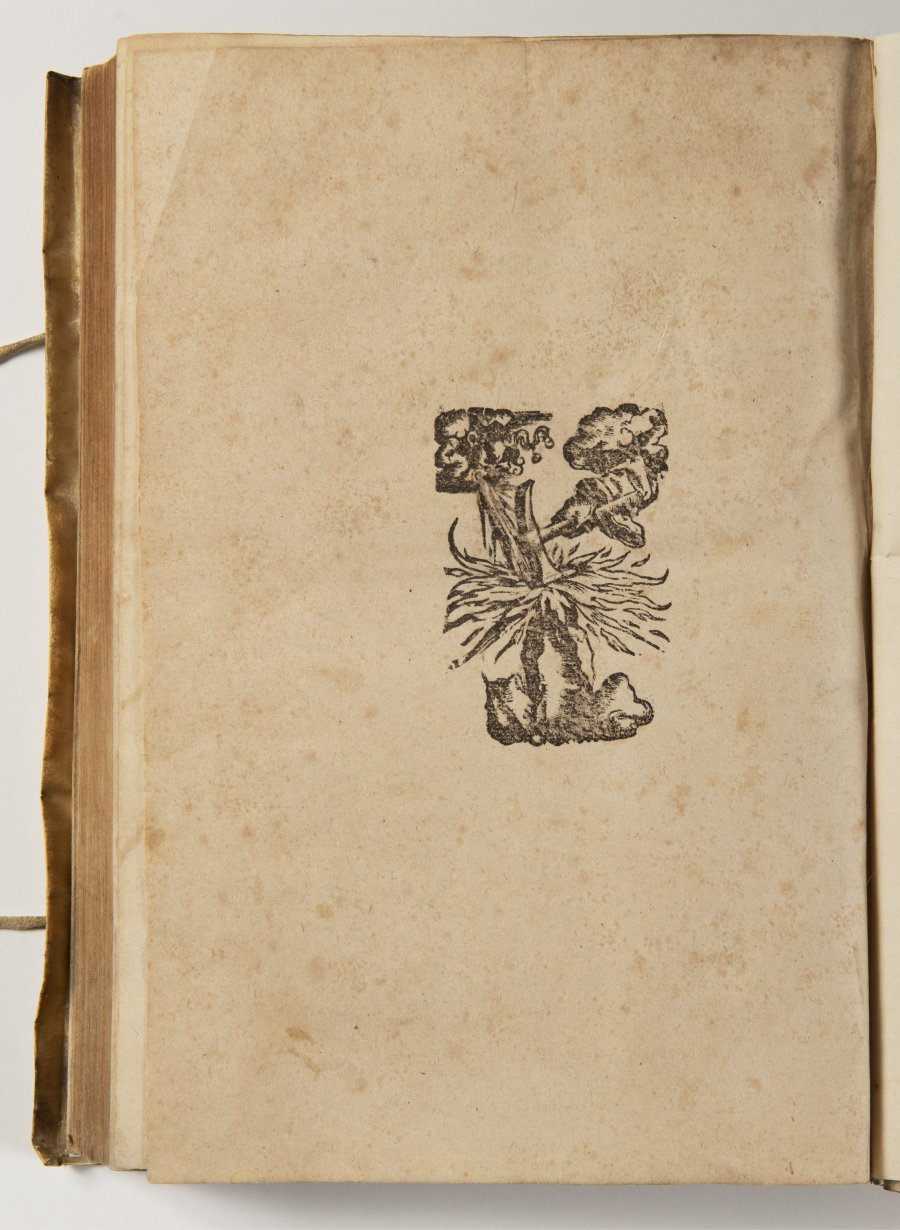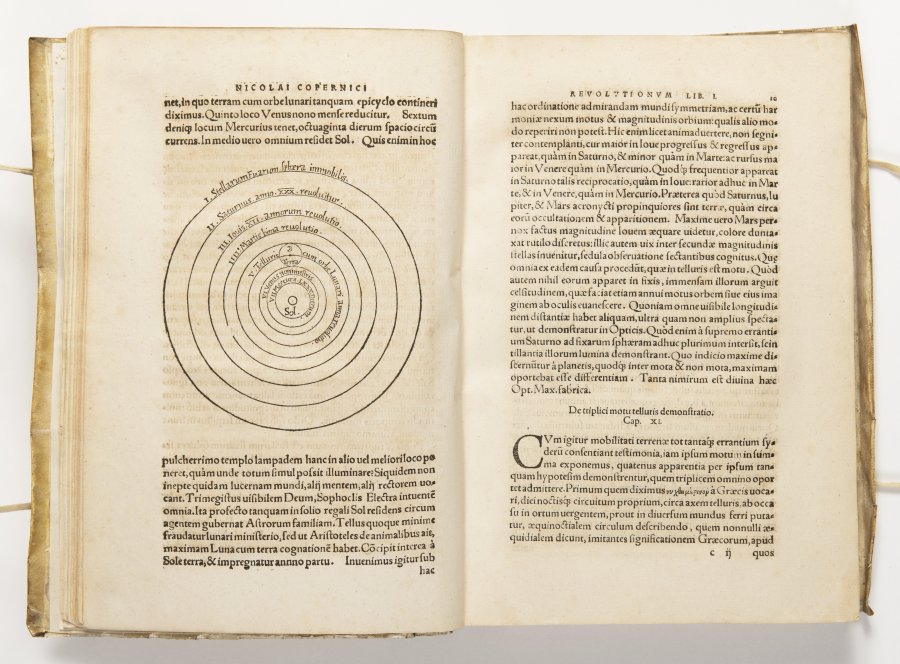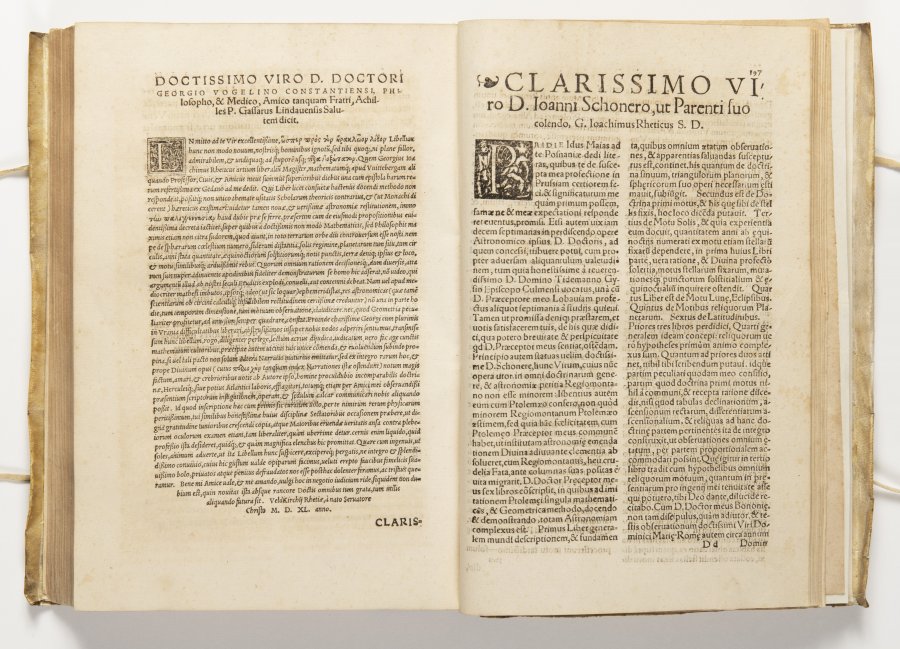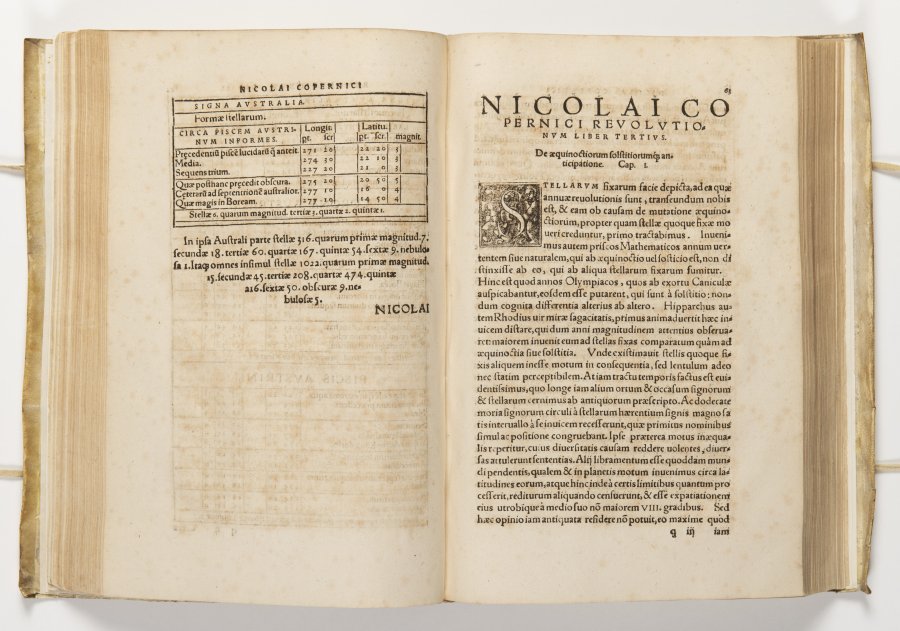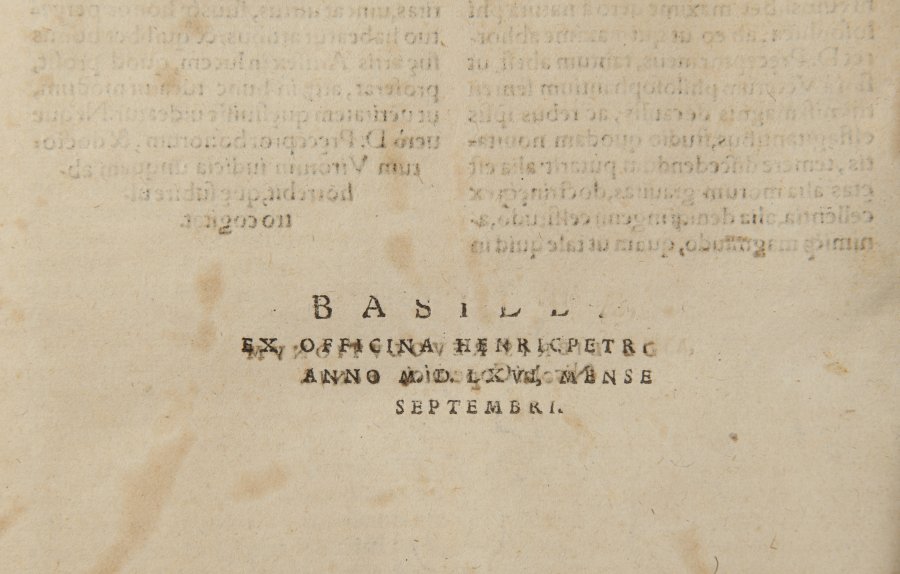1 900 000 CZK
| 74 510 €
Lot 02
DE REVOLUTIONIBUS ORBIUM COELESTIUM
Starting price
Price realized
2 000 000 CZK
| 78 431 €
| 78 431 €
price without premium
Basel, H. Petri, 1566 (Second edition)
Small folio: 27.5 × 20 × 3 cm
Copernicus’ “On the Revolutions of the Heavenly Spheres” concludes the thousand-year-long supremacy of Ptolemy’s geocentric system. It places the Sun in the center of the universe, as this model corresponds better to the measurements and observations that long failed to explain the phenomena in the skies. According to the heliocentric principle, the planets are spheres that revolve along circular paths around the Sun, the center of the universe, while also rotating on their axis, thus describing the surface of a cone. This movement was noted as precise. The text is supported with many exact calculations and tables.
Overturning the understanding of and deep-seeded beliefs regarding the universe in such a fundamental manner was hardly acceptable for society at the time. The church banned the book and even reformers such as Martin Luther and Philip Melanchthon openly showed their contempt towards it. Georg Joachim de Porris, also known as Rheticus (1514–1574), a mathematician, astronomer and supporter of Copernicus, helped dispel Copernicus’ hesitations about publishing the book. Rheticus’ paper “Narratio Prima”, featured as a supporting text attached at the conclusion of the book, swayed Copernicus to make the difficult decision to publish the paper and defend the thesis against the Church.
The more precisely defined phenomena on Earth and in the universe later became the basis for more exact geometrical coordinates, forwarded trigonometry and navigation, improved the measurement of time and brought about a reform of the calendar. These factors went on to contribute to the development of seafaring, sea and land exploration, and world trade. Copernicus’ principles directly and indirectly brought the end of the medieval order and ushered in the birth of the modern world. Although some of his individual theories have since been disproved, to this day they serve as an important source in the study of theoretical mathematics, the theory of relativity, and the observer’s position vis-à-vis their surroundings. They remain the basic building block of human knowledge. The book rarely appears at auction or is available through direct sale. Only approximately 400 copies have been preserved and due to the book’s importance, worldwide it has long remained practically unavailable.
Six unnumbered sheets, 213 numbered sheets 1 unnumbered sheet. Repeated printer’s mark on the title page and final page; many astronomical and geometrical woodcut diagrams in the text; initials and framed tables.
Sheet 27 is erroneously paged 32 and sheet 73 as 65, just like other known copies. Historical flexible parchment binding with hand-written title on the spine; leather bands from a later date.
Condition: Title page – tanning in the upper section, professionally repaired tear in upper left. Inscription of record number in pencil below. Following five unnumbered sheets have a lengthwise stain along the spine, which does not reach the text (except on the first page after the title page, where the stain does overlap with the text). Text and engravings visible on reverse leaf in places.
Text block as a whole is in excellent, compact, original condition; some leaves are slightly tanned.
No further conservation measures; broad margins of sheets have no marginals, newer flyleaves, clean. Complete copy, very good condition.
Provenience: Josef Jan Fric (1861 Paris – 1945 Prague), Czech industrialist, mechanical engineer, optical lens and telescope maker, astronomer and patron. In 1898 he purchased land near the village of Ondrejov, Central Bohemia, where he built an observatory and in 1928 donated it to the Czechoslovak Republic. His heirs state that the book remained in the family’s possession following Fric’s death. The record number on the title page (below, in pencil) was probably written by him. The copy does not bear any other inscriptions and previous owners are not known.
More works from auction
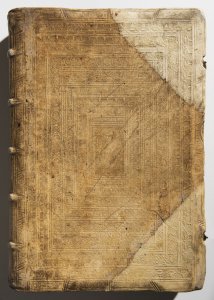
Lot 1 LIBER CHRONICARUM
Starting price650 000 CZK | 25 490 €
Price realized
650 000 CZK | 25 490 €
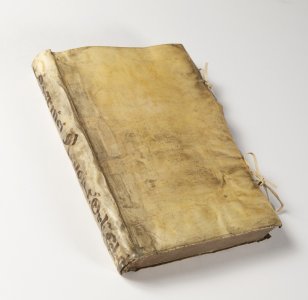
Lot 2 DE REVOLUTIONIBUS ORBIUM COELESTIUM
Starting price1 900 000 CZK | 74 510 €
Price realized
2 000 000 CZK | 78 431 €
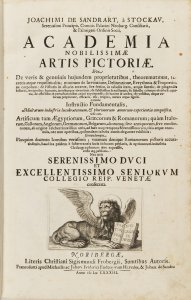
Lot 3 ACADEMIA NOBILISSIMAE ARTIS PICTORIAE
Starting price40 000 CZK | 1 569 €
Price realized
41 000 CZK | 1 608 €
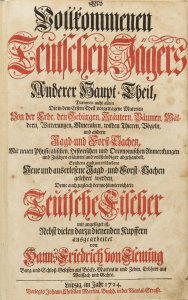
Lot 4 DES VOLLKOMMENEN TEUTSCHEN JÄGERS ANDERER HAUPT-THEIL
Starting price38 000 CZK | 1 490 €
Price realized
10 000 CZK | 392 €
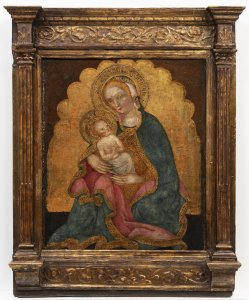
Lot 5 MADONNA WITH THE CHRIST CHILD
Starting price500 000 CZK | 19 608 €
Price realized
500 000 CZK | 19 608 €
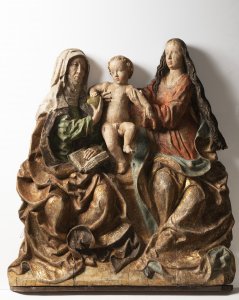
Lot 6 THE VIRGIN AND CHILD WITH ST. ANNE
Starting price350 000 CZK | 13 725 €
Price realized
350 000 CZK | 13 725 €

Lot 7 ITALIAN RENAISSANCE FRAME
Starting price55 000 CZK | 2 157 €
Price realized
65 000 CZK | 2 549 €
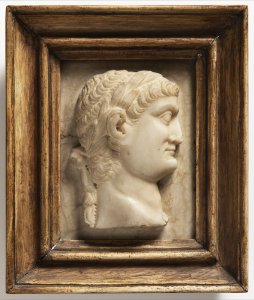
Lot 8 TWO RELIEF PORTRAITS OF ROMAN EMPERORS
Starting price45 000 CZK | 1 765 €
Price realized
45 000 CZK | 1 765 €
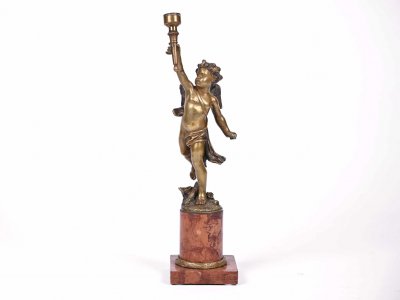
Lot 9 VENUS HONORED BY NYMPHS AND A FAUN
Starting price280 000 CZK | 10 980 €
Price realized
23 225 CZK | 911 €
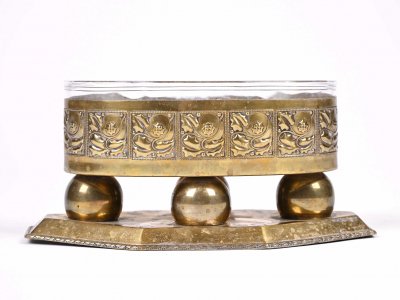
Lot 10 SAINT AGNES OF ROME
Starting price200 000 CZK | 7 843 €
Price realized
3 466 CZK | 136 €
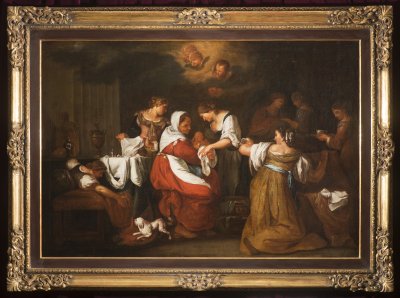
Lot 11 THE BIRTH OF THE VIRGIN
Starting price800 000 CZK | 31 373 €
Price realized
950 000 CZK | 37 255 €
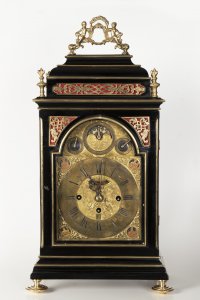
Lot 12 A BAROQUE TABLE CLOCK
Starting price100 000 CZK | 3 922 €
Price realized
100 000 CZK | 3 922 €

